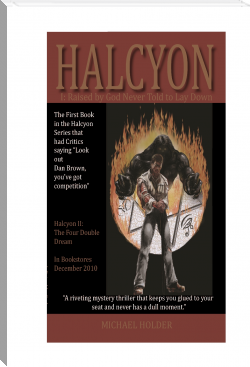Crisis Management: Beyond the Call of Duty by Craig A. McDonough (best inspirational books .txt) 📕

- Author: Craig A. McDonough
- Performer: -
Book online «Crisis Management: Beyond the Call of Duty by Craig A. McDonough (best inspirational books .txt) 📕». Author Craig A. McDonough
One thing to be noticed in the above is the explicit statement that the 13 chapters were specially composed for King Ho Lu. This is supported by the internal evidence of I. § 15, in which it seems clear that some ruler is addressed.
In the bibliographic section of the Han Shu, there is an entry which has given rise to much discussion: "The works of Sun Tzŭ of Wu in 82 p’ien (or chapters), with diagrams in 9 chuan." It is evident that this cannot be merely the 13 chapters known to Ssu-ma Ch’ien, or those we possess today. Chang Shou-chieh refers to an edition of Sun Tzŭ’s Art of War of which the "13 chapters" formed the first chuan, adding that there were two other chuan besides. This has brought forth a theory, that the bulk of these 82 chapters consisted of other writings of Sun Tzŭ—we should call them apocryphal—similar to the Wen Ta, of which a specimen dealing with the Nine Situations [15] is preserved in the T’ung Tien, and another in Ho Shin’s commentary. It is suggested that before his interview with Ho Lu, Sun Tzŭ had only written the 13 chapters, but afterwards composed a sort of exegesis in the form of question and answer between himself and the King. Pi I-hsun, the author of the Sun Tzŭ Hsu Lu, backs this up with a quotation from the Wu Yüeh Ch’un Ch’iu: "The King of Wu summoned Sun Tzŭ, and asked him questions about the art of war. Each time he set forth a chapter of his work, the King could not find words enough to praise him." As he points out, if the whole work was expounded on the same scale as in the above-mentioned fragments, the total number of chapters could not fail to be considerable. Then the numerous other treatises attributed to Sun Tzŭ might be included. The fact that the Han Chih mentions no work of Sun Tzŭ except the 82 p’ien, whereas the Sui and T’ang bibliographies give the titles of others in addition to the "13 chapters," is good proof, Pi I-hsun thinks, that all of these were contained in the 82 p’ien. Without pinning our faith to the accuracy of details supplied by the Wu Yüeh Ch’un Ch’iu, or admitting the genuineness of any of the treatises cited by Pi I-hsun, we may see in this theory a probable solution of the mystery. Between Ssu-ma Ch’ien and Pan Ku there was plenty of time for a luxuriant crop of forgeries to have grown up under the magic name of Sun Tzŭ, and the 82 p’ien may very well represent a collected edition of these lumped together with the original work. It is also possible, though less likely, that some of them existed in the time of the earlier historian and were purposely ignored by him. [16]
Tu Mu’s conjecture seems to be based on a passage which states: "Wei Wu Ti strung together Sun Wu’s Art of War," which in turn may have resulted from a misunderstanding of the final words of Ts’ao King’s preface. This, as Sun Hsing-yen points out, is only a modest way of saying that he made an explanatory paraphrase, or in other words, wrote a commentary on it. On the whole, this theory has met with very little acceptance. Thus, the Ssu K’u Ch’uan Shu says: "The mention of the 13 chapters in the Shih Chi shows that they were in existence before the Han Chih, and that latter accretions are not to be considered part of the original work. Tu Mu’s assertion can certainly not be taken as proof."
There is every reason to suppose, then, that the 13 chapters existed in the time of Ssu-ma Ch’ien practically as we have them now. That the work was then well known he tells us in so many words. "Sun Tzŭ’s 13 Chapters and Wu Ch’i’s Art of War are the two books that people commonly refer to on the subject of military matters. Both of them are widely distributed, so I will not discuss them here." But as we go further back, serious difficulties begin to arise. The salient fact which has to be faced is that the Tso Chuan, the greatest contemporary record, makes no mention whatsoever of Sun Wu, either as a general or as a writer. It is natural, in view of this awkward circumstance, that many scholars should not only cast doubt on the story of Sun Wu as given in the Shih Chi, but even show themselves frankly skeptical as to the existence of the man at all. The most powerful presentment of this side of the case is to be found in the following disposition by Yeh Shui-hsin: [17]—
It is stated in Ssu-ma Ch’ien’s history that Sun Wu was a native of the Ch’i State, and employed by Wu; and that in the reign of Ho Lu he crushed Ch’u, entered Ying, and was a great general. But in Tso’s Commentary no Sun Wu appears at all. It is true that Tso’s Commentary need not contain absolutely everything that other histories contain. But Tso has not omitted to mention vulgar plebeians and hireling ruffians such as Ying K’ao-shu, [18] Ts’ao Kuei, [19], Chu Chih-wu and Chuan She-chu [20]. In the case of Sun Wu, whose fame and achievements were so brilliant, the omission is much more glaring. Again, details are given, in their due order, about his contemporaries Wu Yuan and the Minister P’ei. [21] Is it credible that Sun Wu alone should have been passed over?
In point of literary style, Sun Tzŭ’s work belongs to the same school as Kuan Tzŭ, [22] Liu T’ao, [23] and the Yüeh Yu [24] and may have been the production of some private scholar living towards the end of the "Spring and Autumn" or the beginning of the "Warring States" period. [25] The story that his precepts were actually applied by the Wu State, is merely the outcome of big talk on the part of his followers.
From the flourishing period of the Chou dynasty [26] down to the time of the "Spring and Autumn," all military commanders were statesmen as well, and the class of professional generals, for conducting external campaigns, did not then exist. It was not until the period of the "Six States" [27] that this custom changed. Now although Wu was an uncivilized State, it is conceivable that Tso should have left unrecorded the fact that Sun Wu was a great general and yet held no civil office? What we are told, therefore, about Jang-chu [28] and Sun Wu, is not authentic matter, but the reckless fabrication of theorizing pundits. The story of Ho Lu’s experiment on the women, in particular, is utterly preposterous and incredible.
Yeh Shui-hsin represents Ssu-ma Ch’ien as having said that Sun Wu crushed Ch’u and entered Ying. This is not quite correct. No doubt the impression left on the reader’s mind is that he at least shared in these exploits. The fact may or may not be significant; but it is nowhere explicitly stated in the Shih Chi either that Sun Tzŭ was general on the occasion of the taking of Ying, or that he even went there at all. Moreover, as we know that Wu Yuan and Po P’ei both took part in the expedition, and also that its success was largely due to the dash and enterprise of Fu Kai, Ho Lu’s younger brother, it is not easy to see how yet another general could have played a very prominent part in the same campaign.
Ch’en Chen-sun of the Sung dynasty has the note:—
Military writers look upon Sun Wu as the father of their art. But the fact that he does not appear in the Tso Chuan, although he is said to have served under Ho Lu King of Wu, makes it uncertain what period he really belonged to.
He also says:—
The works of Sun Wu and Wu Ch’i may be of genuine antiquity.
It is noticeable that both Yeh Shui-hsin and Ch’en Chen-sun, while rejecting the personality of Sun Wu as he figures in Ssu-ma Ch’ien’s history, are inclined to accept the date traditionally assigned to the work which passes under his name. The author of the Hsu Lu fails to appreciate this distinction, and consequently his bitter attack on Ch’en Chen-sun really misses its mark. He makes one of two points, however, which certainly tell in favour of the high antiquity of our "13 chapters." "Sun Tzŭ," he says, "must have lived in the age of Ching Wang [519-476], because he is frequently plagiarized in subsequent works of the Chou, Ch’in and Han dynasties." The two most shameless offenders in this respect are Wu Ch’i and Huai-nan Tzŭ, both of them important historical personages in their day. The former lived only a century after the alleged date of Sun Tzŭ, and his death is known to have taken place in 381 B.C. It was to him, according to Liu Hsiang, that Tseng Shen delivered the Tso Chuan, which had been entrusted to him by its author. [29] Now the fact that quotations from the Art of War, acknowledged or otherwise, are to be found in so many authors of different epochs, establishes a very strong anterior to them all,—in other words, that Sun Tzŭ’s treatise was already in existence towards the end of the 5th century B.C. Further proof of Sun Tzŭ’s antiquity is furnished by the archaic or wholly obsolete meanings attaching to a number of the words he uses. A list of these, which might perhaps be extended, is given in the Hsu Lu; and though some of the interpretations are doubtful, the main argument is hardly affected thereby. Again, it must not be forgotten that Yeh Shui-hsin, a scholar and critic of the first rank, deliberately pronounces the style of the 13 chapters to belong to the early part of the fifth century. Seeing that he is actually engaged in an attempt to disprove the existence of Sun Wu himself, we may be sure that he would not have hesitated to assign the work to a later date had he not honestly believed the contrary. And it is precisely on such a point that the judgment of an educated Chinaman will carry most weight. Other internal evidence is not far to seek. Thus in XIII. § 1, there is an unmistakable allusion to the ancient system of land-tenure which had already passed away by the time of Mencius, who was anxious to see it revived in a modified form. [30] The only warfare Sun Tzŭ knows is that carried on between the various feudal princes, in which armored chariots play a large part. Their use seems to have entirely died out before the end of the Chou dynasty. He speaks as a man of Wu, a state which ceased to exist as early as 473 B.C. On this I shall touch presently.
But once refer the work to the 5th century or earlier, and the chances of its being other than a bonâ fide production are sensibly diminished. The great age of forgeries did not come until long after. That it should have been forged in the period immediately following 473 is particularly unlikely, for no one, as a rule, hastens to identify himself with a lost cause. As for Yeh Shui-hsin’s theory, that the author was a literary recluse, that seems to me quite untenable. If one thing is more apparent than another after reading the maxims of Sun Tzŭ, it is that their essence has been distilled from a large store of personal observation





Comments (0)